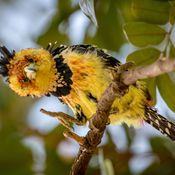Area Highlights

🌍 Location: Part of the Greater Kruger area, bordering Kruger National Park in South Africa’s Limpopo Province
📏 Size: Approximately 60,000 hectares of unfenced wilderness, allowing wildlife to roam freely into Kruger and beyond
🏞 Scenery: Untamed bushveld, winding rivers, rocky outcrops, and pristine savannah landscapes
🦁 Big Five: Home to lions, leopards, elephants, rhinos, and buffalo, along with cheetahs, wild dogs, and hyenas
🐦 Birdlife: Rich diversity of raptors, waterbirds, and bushveld species—paradise for bird enthusiasts
🛶 Klaserie River: Lifeline of the reserve, attracting herds of elephants and other wildlife to its banks
📸 Photography haven: Exclusive sightings, fewer vehicles, and uncrowded opportunities for dramatic wildlife shots
🕰 History: Proclaimed in 1969 and officially established in 1972, with a strong ethos of conservation and community involvement

About Klaserie
The Klaserie’s unfenced boundaries with neighbouring reserves and the Kruger National Park allow for the free and protected movement of wildlife across an area in excess of 2 million hectares. It is steeped in history, cherishing the connection between people and their wild roots, and prioritising sustainable tourism that contributes to the safety of wildlife and the upliftment of the local communities.
Staying at Klaserie, you’ll be treated to a real off-the-beaten-track safari. Far from the madding Kruger crowds, you’ll meet very few other vehicles when you set off through the bush in your open-topped jeep. This lends the game drives here a really epic, authentic feeling that no longer exists in many other reserves. The landscape of Klaserie is beautiful in its own right, with soft shades of bushwillow woodland rolling off into the horizon and the gentle gushing sound of the Klaserie River in the background. The wildlife viewing is second to none in Klaserie.
As well as the Big Five, the reserve is home to giraffe, zebra, warthog, spotted hyaena, baboon, hippo, impala, kudu, vervet monkey, waterbuck, wildebeest, bushbaby and mongoose! In addition, you may see wild dog, cheetah, bat-eared fox, honey badger, porcupine, aardvark, civet, caracal and serval. Up in the trees, all kinds of birds twitter into the twilight, making it a brilliant destination for birders.
Kruger National Park
Established in 1898 to protect the wildlife of the South African Lowveld, this national park is unrivalled in the diversity of its life forms and a world leader in advanced environmental management techniques and policies. Kruger is home to an impressive number of species: 336 trees, 49 fish, 34 amphibians, 114 reptiles, 507 birds and 147 mammals.
Truly the flagship of the South African National Parks, this enormous and magnificent park is one of the most popular public-entry game parks in the world.
The Greater Kruger
The Greater Kruger is the collective name given to the private reserves on the western boundary of the Kruger National Park. These include the Klaserie, Umbabat, Timbavati, Balule, Manyeleti, and Sabi Sand reserves. These reserves dropped their fences to become part of one pristine tract of protected wilderness in the name of biodiversity conservation.
































